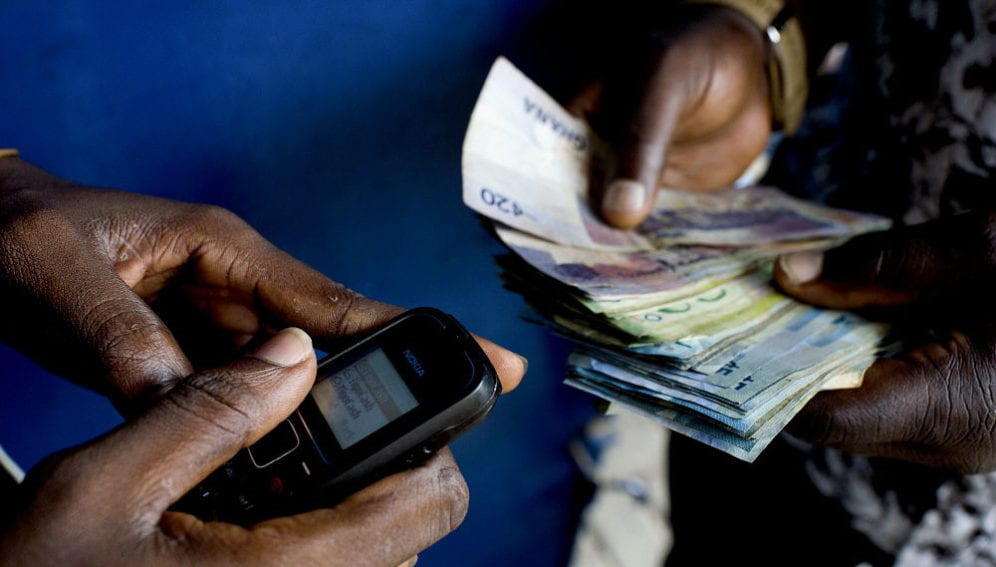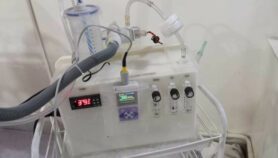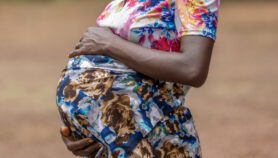By: Tim Colbourn, Andrew Seal and Melvin Obadha
Send to a friend
The details you provide on this page will not be used to send unsolicited email, and will not be sold to a 3rd party. See privacy policy.
Mobile money spurs savings, thus increasing healthcare access, write Melvin Obadha, Andrew Seal and Tim Colbourn.
With access to healthcare still a major problem in Sub-Saharan Africa because of costs, the continent could benefit from using services such as mobile money and savings.
Evidence from Kenya
In Kenya, only 40 per cent of the population seek services from primary level public health facilities where it’s free. Instead 60 per cent of the population opt to go to private or higher levels of public healthcare where they must pay.
This is because primary-level public facilities tend to lack equipment, staff, medicine and good quality of care. Furthermore, health insurance coverage is low as 82 per cent of women and 79 per cent of men do not have it.
Households are forced to make out-of-pocket payments to cater for the direct and indirect costs of healthcare such as consultation, medicines, diagnostic tests, hospitalisation costs, transportation to a health facility, time off work of the ill family member and associated loss of income. In coping with the costs of healthcare, households will first use available income and savings.
Then they resort to borrowing from informal and formal financial institutions, rely on remittances from family and friends (social networks), cut back on non-health expenses such as food and education, delay investment, shift labour tasks between family members and hire external labour to cater for the ill family member.
They might incur catastrophic expenditures, which in turn pushes them into poverty. Annually, 1.6 per cent of Kenyans are pushed into poverty due to healthcare costs.
Poor households have tight budgets, small incomes, little savings and no assets. If they do have assets, they are usually locked in informal financial groups and are difficult to convert into cash immediately. Moreover, because they have no financial alternatives financial institutions and insurance companies are afraid to extend services to this ‘high risk’ segment. Thus, the poor might forgo needed healthcare or risk being pushed deeper into poverty by medical expenses.
“Households are forced to make out-of-pocket payments to cater for the direct and indirect costs of healthcare.”
Melvin Obadha, Andrew Seal and Tim Colbourn.
A year-long study of the financial habits of 298 Kenyan households found that 38 per cent of them had to delay or forgo needed medical care because of high costs.
To solve cash flow problems, the poor need financial instruments that build on the existing social networks, provide loans and savings with minimal requirements when faced with health problems and extend health insurance. These instruments include mobile money.
Mobile money and cash access
Mobile money is a service that enables users to send, receive and store virtual money using their mobile phones. Users can also use it to pay utility bills, pay for goods and services at a store or online, and receive bulk disbursements such as salaries or cash transfers. An example is M-PESA, which is available in ten countries including the Democratic Republic of Congo, Ghana, Kenya, Lesotho, Mozambique and Tanzania.
By December 2017, 49.1 per cent (338.4 million) global mobile money accounts were in Sub-Saharan Africa. Within the region, East Africa had 56.4 per cent of the accounts, followed by West Africa at 30.9 per cent. In Eastern Africa, 66 per cent of the adult population of Kenya, Rwanda, Tanzania and Uganda combined actively used mobile money.
Mobile money might be attached to services such as mobile insurance, savings and credit accounts. Mobile insurance provides insurance through the mobile phone where users pay for premiums in small amounts and receive claims through mobile money.
Mobile savings and credit accounts enable mobile money users to save while earning interest and get loans such as KCB M-PESA and Mshwari in Kenya, and M-Pawa in Tanzania.
Mobile money seems to be providing users with prompt access to cash that they can use to pay for needed healthcare and share risk. Users can save, get loans from mobile savings and credit accounts, pay for health insurance cheaply, and send or receive remittances promptly to pay for health expenses.
Remittances and health insurance
Mobile money has enabled users to share risk by facilitating the prompt mobilisation of funds from friends and relatives who live miles away to pay for medical emergencies.
Evidence from a study in Kenya found that between 2008 and 2010 M-PESA user households had an 11 per cent higher probability of receiving a remittance as compared to non-users when faced with health emergencies. They could rely on remittances to pay for additional healthcare costs without reducing expenditure on education and food.
Another study published in 2011, which analysed 18,000 weekly financial transactions of 92 low income people in Kenya, found that 35 per cent of hospital bills were paid using M-PESA remittance from family and friends.
“Mobile money seems to be providing users with prompt access to cash that they can use to pay for needed healthcare.”
Melvin Obadha, Andrew Seal and Tim Colbourn.
Although health insurance coverage is still low in many countries in Sub-Saharan Africa, mobile money use may have increased access to it. Kenya’s social health insurance, the National Hospital Insurance Fund (NHIF), experienced a 500 per cent increase in voluntary payment subscribers between 2009 and 2017 after the organisation started receiving payments via M-PESA.
The NHIF is mandatory for those employed in the formal sector but voluntary for those in the informal sector. M-PESA made payment of insurance premiums easier, quicker, and safer through Paybill and Lipa na M-PESA services. Such payments likely reduced workload on the NHIF staff who could in turn focus on processing new registrations.
Impacts of mobile money
The technology has improved savings practices as it reduces transaction costs, provides a safe and trusted place to store money, and facilitates transfers to and from other savings vehicles such as mobile savings and credit accounts, bank accounts, and informal financial groups.
Just being an M-PESA user in rural Kenya for example, makes you 16 – 22 percent more likely to save as compared to a non-user.
In Burkina Faso, mobile money users with unstable earnings and least educated users tend to save for health emergencies as compared to non-users.
In Kenya, a 2015 survey found that three per cent saved in Mshwari specifically for medical emergencies. However, 33 per cent saved to increase the amount of credit they could qualify for in future.
This ‘future credit’ could be used for anything including paying for medical expenses when needed. The survey also showed that eight per cent of Mshwari users who took loans borrowed to pay for medical expenses. The average loan amount was 1,280 Kenyan shillings (almost US$13).
Products such as KCB M-PESA and Mshwari are shifting borrowing from social networks because of the ease of how one can access credit faster without having to negotiate and convince social networks who might not come through.
However, they offer small loan amounts and short repayment periods (30 days) which might not be enough for bigger health expenses.
Mobile money seems to provide the needed cash and facilitates risk sharing thereby helping users to cope with the financial consequences of illness that in turn prevents them from falling into- or deeper into poverty. Indeed, M-PESA lifted two per cent of Kenyan households out of poverty between 2008 and 2014.As governments across Sub-Saharan Africa struggle to ensure that their people access needed healthcare without experiencing financial hardship, mobile money is helping users to cope.
There are calls to integrate mobile money into digital health applications. An example of such applications is M-TIBA, a mobile health wallet that enables users to receive funds, send, save, and pay for medical services at specific health facilities.
Although promising, these applications have to offer risk pooling and need rigorous evaluations to provide the evidence of their effectiveness.
Melvin Obadha research officer in health economics, Kenya Medical Research Institute, Wellcome Trust Research Programme, can be reached at [email protected]
Andrew Seal, senior Lecturer in international nutrition, University College London (UCL) Institute for Global Health, can be reached at [email protected]
Tim Colbourn, senior Lecturer in global health epidemiology and evaluation, University College London (UCL) Institute for Global Health, can be reached at [email protected]
This piece was produced by SciDev.Net’s Sub-Saharan Africa English desk.
References
[1] 2013 Kenya household health expenditure and utilisation survey (Ministry of Health, December 2014)
[2] Kenya Demographic and Health Survey 2014 (Kenya National Bureau of Statistics, December 2015)
[3] Diane McIntyre and others What are the economic consequences for households of illness and of paying for health care in low-and middle-income country contexts? (Social Science & Medicine, February 2006)
[4] Edwine Barasa and others Assessing the impoverishing effects and factors associated with the incidence of catastrophic health care payments in Kenya (International Journal for Equity in Health, 6 February 2017)
[5] Jullie Zollmann Kenya Financial Diaries: Shilingi kwa shilingi, the financial lives of the poor (Financial Sector Deepening Kenya, August 2014) [6] M-Pesa: The world's most successful money transfer service (Vodafone Group, 2017)
[7] 2017 State of the industry report on mobile money (GSMA, February 2018)
[8] Tavneet Suri and others Documenting the birth of a financial economy (PNAS, 26 June 2012)
[9] Guy Stuart and Monique Cohen Cash in, cash o Kenya: The Role of M-PESA in the lives of low-income people (Financial Services Assessment, September 2011)
[10] Person-to-government (P2G) payment digitisation: Lessons from Kenya (GSMA, 28 September 2017)
[11] Alev Gurbuz Mobile mney and savings in rural Kenya (Georgetown University, November 2017)
[12] Serge Ky and others Does mobile money affect saving behaviour? Evidence from a developing country (Journal of African Economies, 25 October 2017)
[13] Financial inclusion insights program – M-Shwari study report (InterMedia, January 2015)
[14] Tavneet Suri and William Jack The long-run poverty and gender impacts of mobile money (Science, 9 December 2016)














